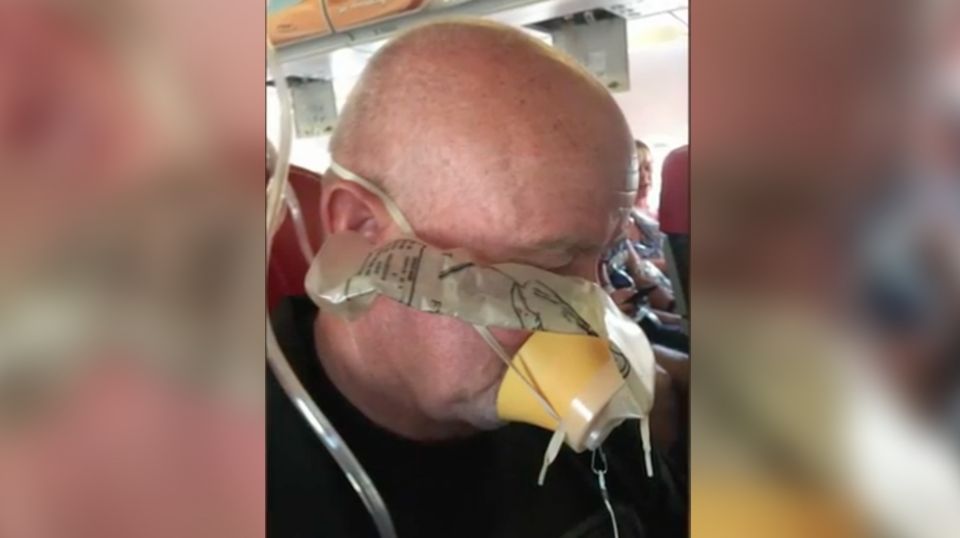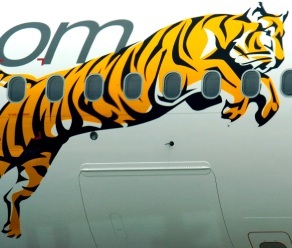Investigators call for clearer instructions after AirAsia chaos
27 November, 2019
4 min read
By joining our newsletter, you agree to our Privacy Policy


Cabin crew shouting inappropriate instructions such as “brace” and “crash position” contributed to passenger confusion and panic during a cabin pressurization problem on an AirAsia Indonesia flight from Perth to Bali, according to Australian investigators.
SEE some crazy ideas that never made it onto aircraft
SEE our photo gallery of brave hostesses of the mid-20th century.
READ: Best Airlines 2020.
Australian Transport Safety Bureau investigators also found the Indonesian carrier’s pre-flight safety briefing did not include clear instructions about the operation of oxygen masks deployed during the incident.
As a result, the bureau issued a safety recommendation calling on the airline to review its passenger safety briefing material and ensure instructions on how to activate the masks are clear and effective.
The AirAsia Indonesia Airbus A320 was about 30 minutes out of Perth on October 15, 2017, when it dropped quickly from 34,000ft to 10,000ft and the pilots manually deployed the passenger oxygen masks.
The pilots were responding to a master caution warning of a malfunction of the aircraft’s pressurization system.
READ: Highly respected aviation experts critical of Lion Air crash report and pilots.
“During the emergency descent, some oxygen masks did not deploy or passengers felt they were not receiving oxygen,’’ the ATSB said.
“Consequently, some passengers then moved around the cabin to find a functioning oxygen mask unit.
“Passengers later surveyed by the ATSB recalled that the cabin crew shouted commands such as ‘BRACE’, ‘GET DOWN’ and ‘CRASH POSITION’, increasing their level of confusion and panic.”
Investigators found that AirAsia Indonesia’s pre-flight safety briefing and safety information card did not include a clear instruction on how to activate the flow of oxygen in emergency masks or that a bag on the masks may not inflate when oxygen is flowing.
It said this may have resulted in some passengers failing to understand whether or not oxygen was flowing to the mask.
“Further, cabin crew provided additional commands to passengers that were inappropriate for a depressurization, which had the potential to increase confusion in the cabin and likely increased the level of panic experienced by some passengers,’’ it said.
ATSB transport safety director Dr Stuart Godley said the incident highlighted the importance of a crew’s ability to recall and use appropriate standard commands in managing passengers.
“Passengers generally responded well when appropriate commands were used, but incorrect commands resulted in some confusion and panic among (those) in the cabin,” he said.
“Cabin crew emergency procedures training that includes role-playing of the full range of expected passenger behavior, including panic and confusion, can better prepare cabin crew when exposed to more complex real-world scenarios.”
Dr Godley said the inclusion of information highlighting that oxygen was flowing through the mask even though the bag may not inflate would improve passengers' knowledge and reduce anxiety and their susceptibility to a hypoxia-related event.
The ATSB report also indicated the entire incident could have been avoided if AirAsia Indonesia had followed manufacturer advice to improve the pressurization system.
The pressurization problem was traced to an intermittent rare fault with one of two independent cabin pressure controllers. The fault resulted in warnings of excess cabin altitude and prompted the emergency descent.
“The ATSB found that the operator had reviewed and elected not to incorporate the manufacturers recommended, but not mandatory, improvements to the pressurization system,’’ investigators said.
“The improvements were communicated to the airline by service bulletins. Incorporating the bulletins would have likely prevented the emergency descent incident.”
AirAsia said in a statement that it had cooperated fully with the ATSB.
"Since this incident in 2017, AirAsia has reviewed our processes to ensure we always remain fully compliant and that our safety procedures continue to be robust,'' it said.
"Given the findings in this latest ATSB report, we will review the recommendations, including our pre-flight safety briefing and cabin crew emergency training procedures, as a matter of priority.
"Australia’s aviation safety standards are amongst the highest in the world and AirAsia operates within the same strict guidelines as any airline operating in Australia.
"All AirAsia operated flights to and from Australia have achieved IOSA certification which is the global benchmark for upholding the highest safety standards."
Next Article
3 min read
Virgin gets nod for Tiger deal

Get the latest news and updates straight to your inbox
No spam, no hassle, no fuss, just airline news direct to you.
By joining our newsletter, you agree to our Privacy Policy
Find us on social media
Comments
No comments yet, be the first to write one.
